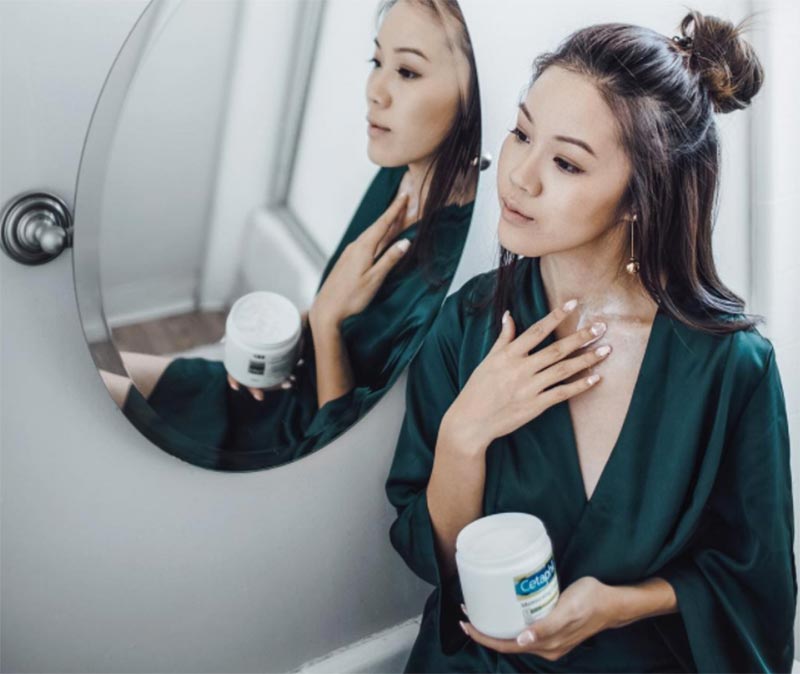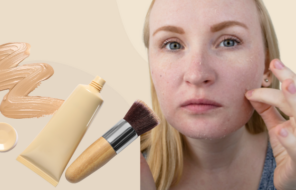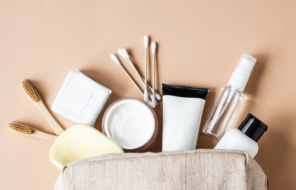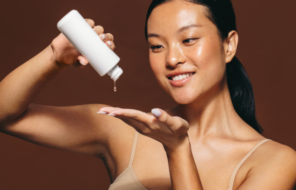The relief that a good moisturizer provides is immediately apparent – the tightness disappears, and suddenly the skin just feels healthy, soothed, and comfortable. Below, we want to show you how to apply face moisturizer propely, as well as we give some details about how to figure out your skin type to pick your perfect moisturizer.
In this article:
Figuring out Your Skin Type
Before you can know exactly which are the best moisturizers for you, you should probably first figure out what your skin type is. Figuring out one’s skin type is pretty simple – you just have to go off the size of your pores, and how long it takes for your skin to produce sebum after it has been cleansed.
Dry skin types have smaller pores, and the skin produces very little oil. Throughout the day the skin will look matte and will produce very little oil (also known as sebum). While dry skin types are more prone to redness, thin skin, sensitivity, flakiness, and fine lines, these concerns on their own are not a sign of dry skin.
Normal and combination skin types are somewhere in the middle between dry skin and oily skin. Normal skin doesn’t really exist, other than as a platonic ideal (after all, who’s to say what’s normal?). With normal and combination skin types, the pores are about medium sized, or perhaps small on the cheeks and larger in the T-zone (the T-shaped area of the forehead, nose, and chin).
The skin, throughout the day, produces some oil, but neither so little as to count as dry, nor so much as to count as oily. This is not an exact science, and the spectrum of combination skin is very large, with some people falling closer to oily skin, and others falling closer to dry skin.
Additionally, with the seasons’ changing, those with normal and combination skin might find that they have different needs. Those with normal and combination skin may experience everything from redness and sensitivity, to signs of premature aging, to hyperpigmentation or acne, and they may want a moisturizer that will target those specific needs.
Oily skin types are the easiest to determine, once you let go of your preconceived notions. Oily skin types have larger pores, especially in the T-zone, and they produce more oil. If you notice a sheen on your skin by midday (hot and sweaty days don’t count!), then you likely have an oily skin type (or maybe a combination skin type that leans towards oily).
If you find yourself constantly struggling to blot away excess oil, then you have an extremely oily skin type. Oily skin types are usually more prone to acne, however, they are just as susceptible to problems like flakiness and dehydration, which can be symptoms of over cleansing the skin.
What About Skin Conditions?
The best moisturizers for every skin type are primarily determined by their texture – do they mattify the skin? Do they become absorbed quickly? Do they feel thicker and more protective?
However, all skin types also have to deal with specific concerns, like acne, redness, hyper-pigmentation, dehydration, premature aging, loss of tone, dullness, and much more. These concerns often have very little to do with one’s actual skin type, but a moisturizer can still help treat them.
Also keep in mind what your unique additional concerns are, and whether each moisturizer might help treat those.
Best Way to Apply a Face Moisturizer
You would think it’d be a given – just take some cream or lotion, and slap it on your face. While you are not totally wrong, there are some best practices when it comes to putting on that face moisturizer.
- Cleanse
Always start with a well-cleansed face. Make sure the facial cleanser you are using is gentle, non-soap based, sulfate-free, and that it doesn’t leave your skin feeling parched. Additionally, make sure you have successfully removed all of the cleanser!
- Add Cream in Your Palm and Apply
There are a lot of different philosophies around how you should apply the moisturizer to your skin. My personal preference is to take a dime sized amount of cream in the palm of my hand. I gently rub both of my palms together, and then massage the cream into my face starting at the chin, and working my way up. I rub my palms over my face in circular, outward motions – this makes sure the moisturizer gets under the peach fuzz that grows on my face, and also gives me an uplifting face massage.
- Press & Roll Method
Another popular application method, from Dr. Hauschka, is known as the “press and roll”. You apply the moisturizer by gently pressing the length of your fingers against your face, and then rolling them off in outward motions. You might want to watch this video to understand the method better.
Extra Tips & Tricks
- You might want to try out skin care layering techniques to give your skin a real moisture bomb. Before applying your moisturizer, you can first apply a hydrating toner, an essence, a skin serum, or an ampoule or two. The key is to apply various treatments in the order of how thick and oily they are. Liquids go first, followed by light emulsions, followed by creams, and then heavier balms.
- Always the best time to apply a moisturizer is when your skin is already saturated with water – this means you should apply moisturizer immediately after your shower.
- The moisturizer you’re using right now is the furthest thing from being one of the best facial moisturizers for every skin type? You can upgrade it by adding a drop of whatever active ingredient it is missing, right into your hand before applying. Not hydrating enough? Try glycerin. Not conditioning enough? Try adding a plant oil (rosehip or grape seed oil for oily skin, coconut oil or apricot oil for dry skin). Doesn’t do anything for your acne? Mix in a bit of tea tree oil or benzoyl peroxide.
- Despite what you have likely heard from many disingenuous skin care writers, you can definitely use moisturizer around the eyes! It will hydrate and moisturize your eye area perfectly, even if it won’t necessarily treat unique eye issues like puffiness or darkness. Just make sure it is gentle – a mattifying or resurfacing moisturizer won’t do the trick for around the eyes.
Photo via @tsangtastic





